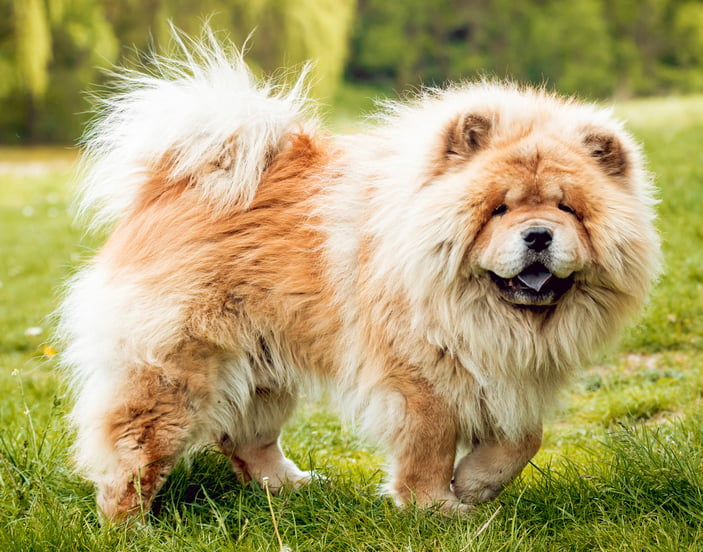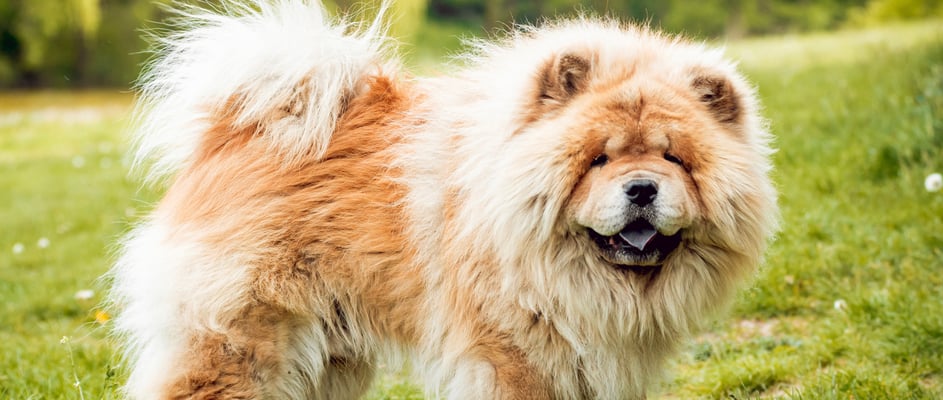The guide to owning a Chow Chow.
Want to know everything there is to know about training your Chow Chow puppy? Submit your email below, and we’ll send you a one-stop guide on all things puppy training!
Jump to:
Stats at a glance.
A history of Chow Chows.
The sizable Chow Chow is an ancient breed known for their proud stance, lion-like mane, and unique blue-black tongue.
Many believe this breed originated in China thousands of years ago, where they served as versatile working dogs, helping hunt, guard, and even pull carts.
Over time, their beautiful, thick coat and proud demeanour have drawn dog lovers worldwide to the Chow Chow dog breed.
Their dignified yet aloof nature gives them an air of mystery, but with the right approach, you’ll find a loyal companion with a famously independent streak.
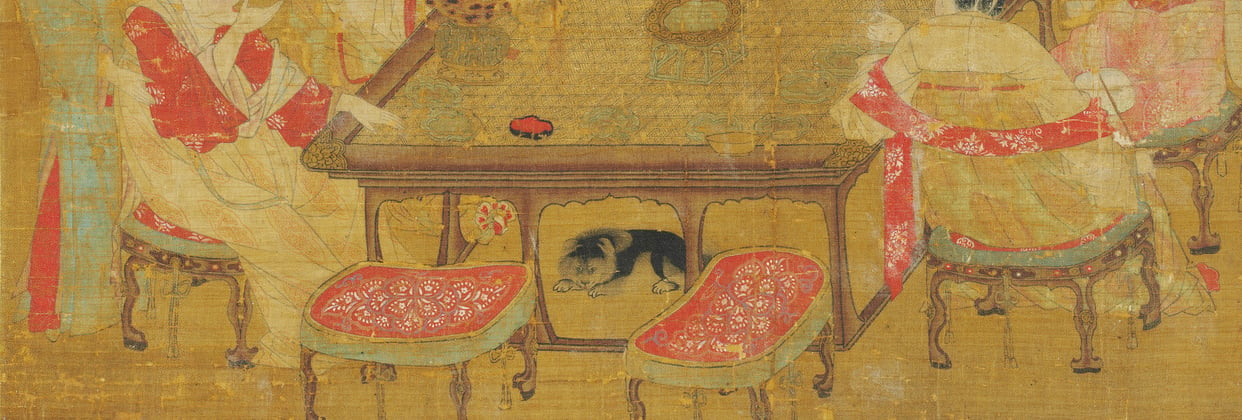

How much is a Chow Chow puppy (UK)?
Thinking of buying a Chow Chow puppy? In the UK, these impressive pups often range from £1,000 to £3,800, with prices influenced by factors like pedigree, breeder reputation, and lineage.
We recommend looking for a reputable source that is transparent about health tests (like hip dysplasia screenings) and living conditions.
Here’s what to look for in a dependable Chow Chow breeder:
They invite you to meet both parents if possible.
They show genuine interest in where their Chow Chow puppies will live.
They provide an environment that supports proper socialisation and general well-being.
For those seeking to compare different dogs before making a commitment, you might enjoy reading about other breeds, too, like our guide to big dog breeds here.
Colours and coat types.
The Chow Chow can come in a variety of colours, including red, cream, blue, black, and cinnamon. Some are rough-coated, boasting that signature thick, plush fur and a truly lion-like appearance. Others are smooth-coated Chows, with shorter, sleeker fur that hugs the body. While both have the unique blue-black tongue, the extent of grooming will vary depending on fur length and density.





Size and weight.
Adult Chow Chows tend to measure 45-56cm at the shoulder and weigh about 20-32kg. They’re compact yet powerful, which means a balanced Chow’s diet and careful monitoring of their weight are vital to keep those joints healthy.
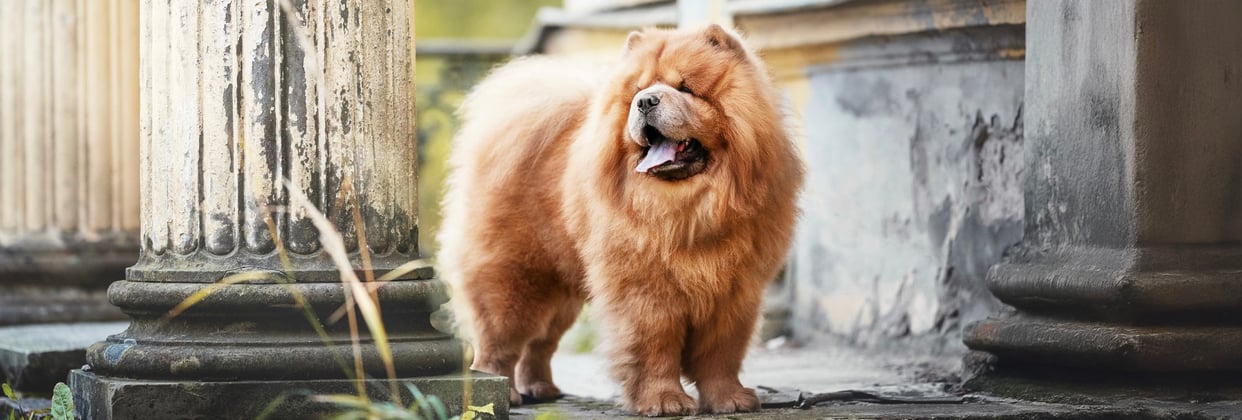

Temperament and behaviour.
Do Chow Chows make good pets?
Absolutely. Owning a Chow Chow can be a wonderful experience for those who appreciate a more relaxed, independent streak in their dog.
Their guarding instinct is strong, so they’re known to be vigilant guard dogs who protect their home.
However, you’ll want to put in time to ensure they’re well-socialised so they accept guests (both two-legged and four-legged) politely.
Are Chow Chows good with kids?
Many Chow Chows are known to be patient but somewhat reserved. If there are younger children in the family, it’s essential to teach them how to approach and handle a Chow gently.
These dogs can get wary if they feel manhandled, so older kids who understand boundaries often match best with a Chow Chow.
Are Chow Chows good with cats?
With thoughtful introductions, dogs and cats can learn to co-exist. The Chow Chow does have a bit of prey drive, so early, controlled meetings are key. Slow socialisation, treats, and positive interactions can help them learn that feline friends are family, not foes.
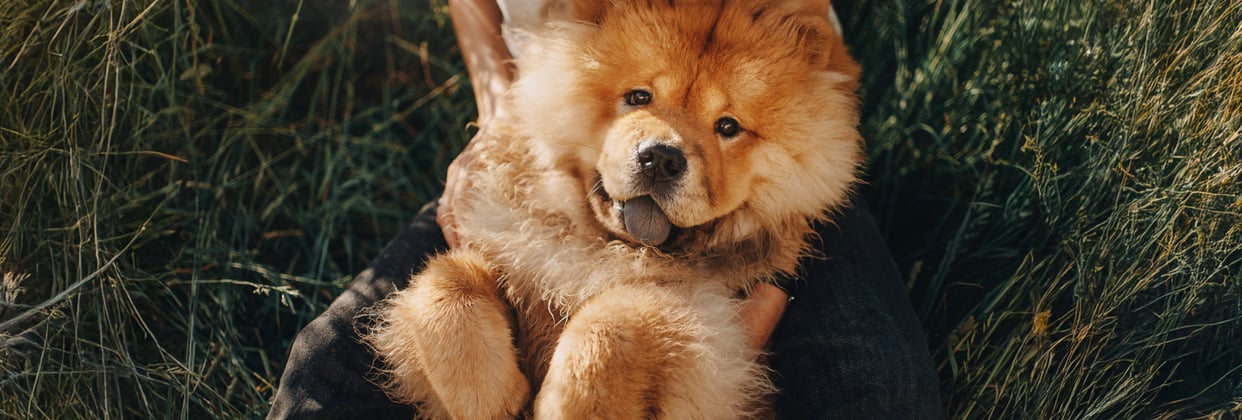

Do Chow Chows suffer from separation anxiety?
While not as prone to clinginess as some breeds, a Chow Chow is a breed that thrives on routine.
They can get anxious if left alone for extended periods, particularly if they haven’t been well-socialised. Gradual departures and arrivals, along with mental enrichment toys, help them cope better.
Can Chow Chows be left alone?
These stately dogs can generally handle a few hours of solo time, especially with proper training. But keep in mind their strong guarding instinct, as excessive isolation could lead to boredom or territorial behaviour.
If you need a dog walker or daycare, that can be a great way to keep your Chow happy and stimulated while you’re away.
Can Chow Chows live in apartments?
They don’t need tons of space since their exercise needs are moderate. Apartment living can work if they receive daily walks and mental stimulation. However, be mindful of their watchful nature—frequent hallway noises might spark a territorial bark.
Do Chow Chows bark a lot?
As a natural breed-specific guardian, a Chow Chow will bark at strangers or odd noises. Still, they’re not typically relentless barkers. Early training focusing on positive, reward-based training can teach them when it’s appropriate to vocalise and when to settle.
Training a Chow Chow.
Are Chow Chows smart?
This Chow Chow breed is plenty intelligent, but also famously self-assured. You might find them slightly stubborn or uninterested in typical dog games.
Remember to use reward-based training with patience and consistency. Harsh corrections often backfire due to their independent streak.
Make training sessions short and upbeat.
Use treats, praise, or their favourite toys.
Remember, a behaviourist can be helpful if you’re dealing with problems like resource guarding or fearfulness.
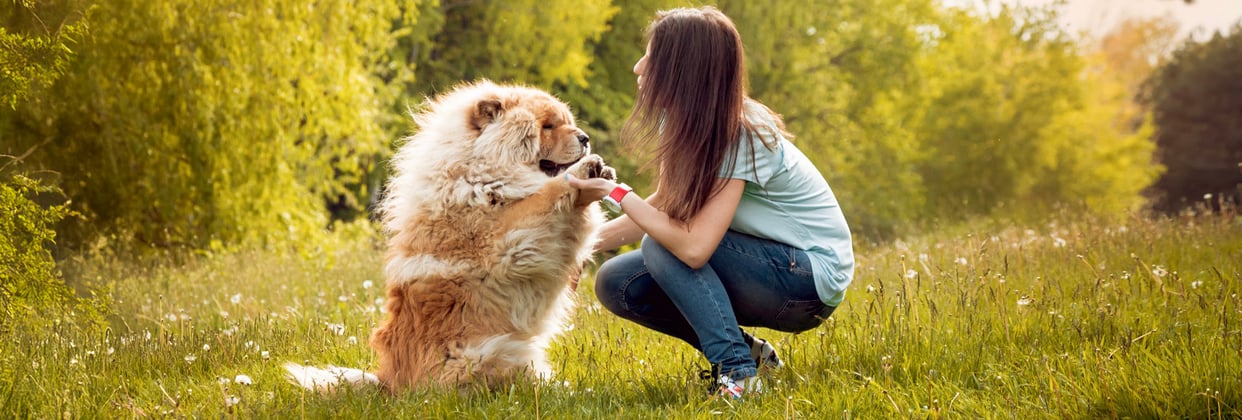

Shedding and grooming.
That dense, thick coat isn’t just for show; it requires dedication. Chow Chows go through heavy shedding periods, typically in spring and autumn.
Brushing at least twice a week is ideal to keep tangles at bay, and daily brushing during peak shedding seasons.
Need brushing around the ears, mane, and skin folds where matting is more common.
Occasional baths help keep that coat plush and clean, but avoid overbathing as it can irritate their skin.
For tips on bathing dogs, here’s a handy piece that can sometimes help.
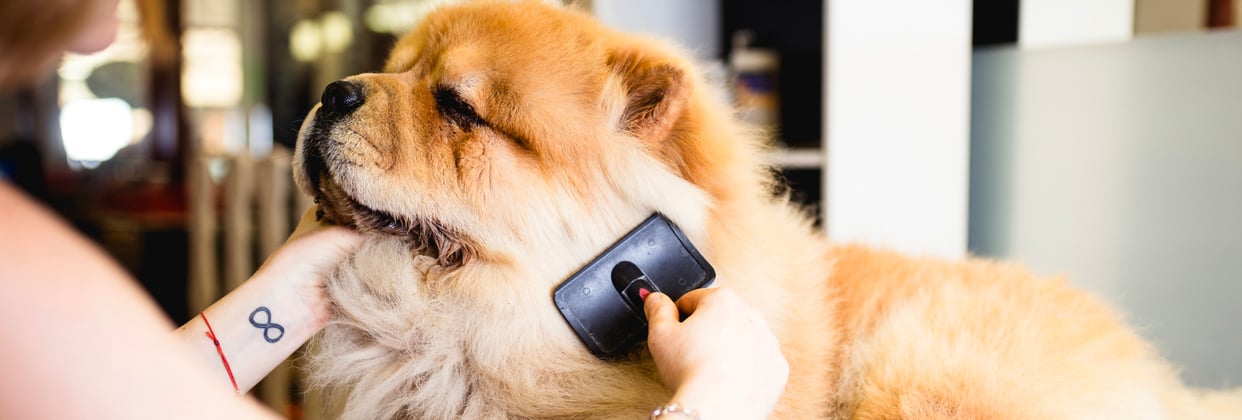

Exercise and mental stimulation.
A daily stroll of about 30-45 minutes is often enough for most adult Chow Chow companions. They might prefer calm walks over high-intensity runs or agility courses.
Be mindful of joint stress, as hip dysplasia or elbow dysplasia could mean these dogs do better with moderate, steady exercise rather than anything too strenuous.
In addition to walking, consider slow-paced interactive play. Puzzle toys, gentle fetch, or even short nosework exercises can help keep their minds engaged. They often enjoy their own space, so giving them a comfy spot to relax after exercise will be much appreciated.
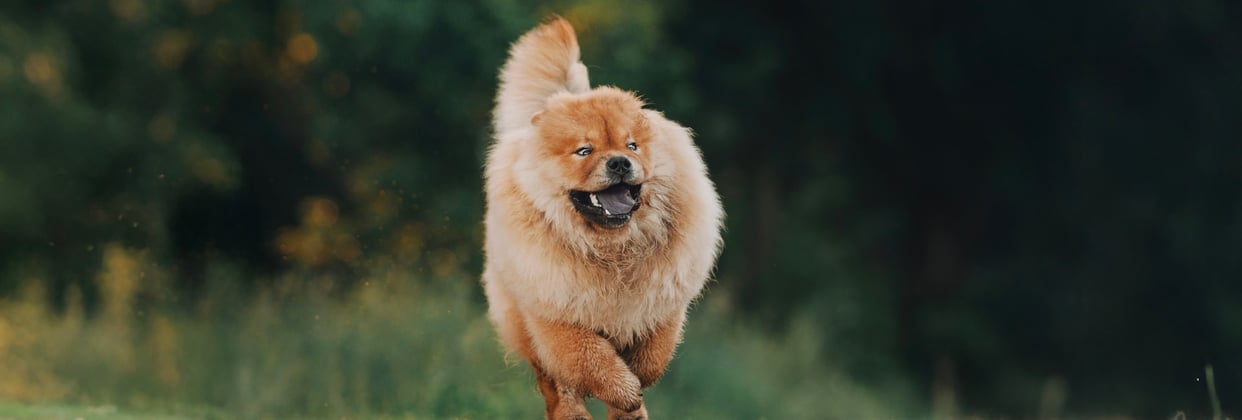

Feeding and nutrition.
Just like with other purebred dogs, a balanced diet is crucial. Chat to your vet about portion sizes that suit your Chow Chow.
Obesity can worsen joint issues, so measure out food carefully and watch for overfeeding.
If you suspect your pet is prone to weight gain, you might explore special diets suited for large-breed or medium-breed dogs with lower calorie counts.
Common health issues in Chow Chows.
Though the Chow Chow is fairly robust, they do face a handful of certain health challenges.
Below is a table of breed-specific concerns, possible treatment costs, and notes to keep in mind.
Note: Costs are approximate and can vary based on location and specific veterinary practices.
Chows can also be prone to eye conditions like distichiasis (extra eyelashes) or cataracts. Regular check-ups help detect issues before they become serious.
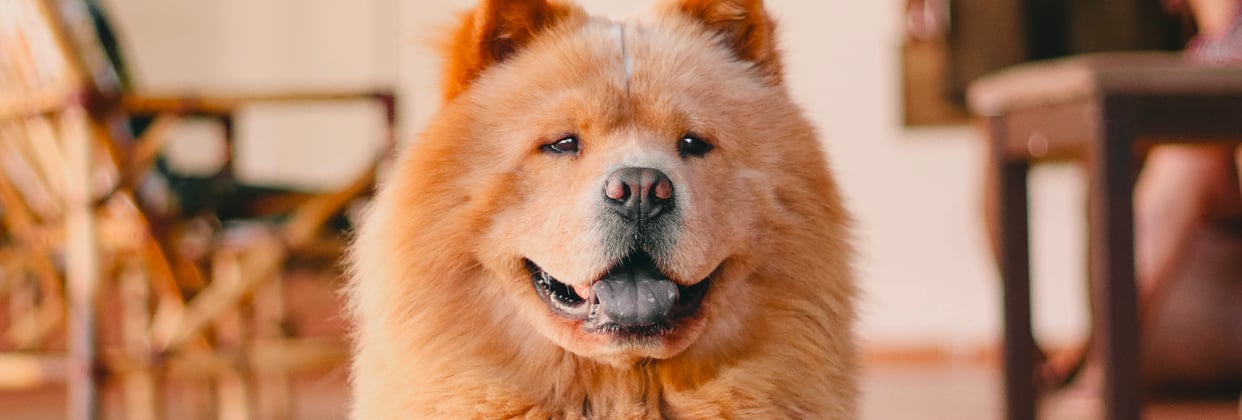

Pet insurance for Chow Chows.
Because certain disorders like hip dysplasia or a ruptured cruciate ligament can be pricey, it’s wise to consider a comprehensive policy. Check out Chow Chow Pet Insurance to see what coverage fits your dog’s needs.
You’ll find robust plans offering:
Lifetime cover for chronic conditions
Inclusion of breed-specific concerns
Quick, stress-free claims
Access to online vet advice
We hope this guide helps you understand the Chow Chow breed and your next steps in owning a Chow Chow. With consistent training, gentle socialisation, and proper preventive care, you’ll have a steadfast companion by your side.
These fluffy, regal dogs might have a rather stilted gait and an aloof demeanour, but their loyalty to family is second to none.
Keep them healthy and happy, and you’ll enjoy many unforgettable moments with your majestic Chow Chow.
